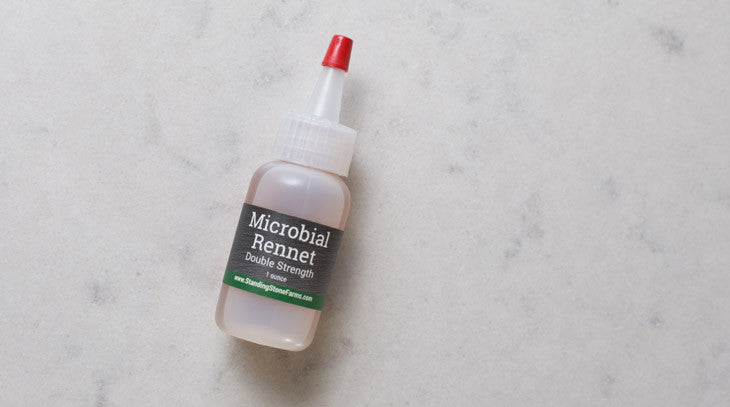Microbial Rennet: What is it and how important is it?
Making homemade cheese is an amazing journey that will not only have you enjoying the fruits of your labor but will also immerse you into old world styles of food preparation. Everything is better when you make it yourself and when it has cheese in it… well, simply wonderful!

Have you ever taken the time to look at the ingredients of your favorite cheese? Most of us know that the main ingredient is milk, but there are so many more ingredients, all of which play a part in the type, texture and flavor of your cheeses. One of the first ingredients you will find is “rennet.”
Rennet is a coagulant, meaning its job is to thicken the milk and help turn it into cheese. It contains the enzyme rennin, also known as chymosin. There are a many different types of coagulants: animal rennet, FPC rennet, vegetable rennet, lemon juice, vinegar, citric acid, and my personal favorite option, microbial rennet. I have made cheese for years using both animal and microbial and the texture and flavor have been almost identical. A few of the longer aged cheeses (3-5 years) were less flavorful with the microbial rennet. However, I believe the benefits far out way this slight lack of flavor in the aged cheeses.
Microbial rennet is a coagulating agent produced by live organisms: fungi, mold or yeast. The live organisms used grow in a lab, where the environment is controlled and monitored to produce the proper amount of fungi, mold, or yeast.
Benefits of Microbial Rennet
- Less Expensive: Compared to rennet produced from animals, generally veal, microbial rennet is much less expensive to produce. This means that the cheeses made using microbial rennet cost less to produce.
- Vegetarian: This type of rennet is NOT derived from animals, meaning vegetarians are allowed to consume it.
- Organic: Readily available with organic labeling.
- Kosher: Readily available with Kosher certification.
- Extended Shelf life: Most animal rennets have a 2-3 month shelf life while most microbial rennet will last up to 24 months.
View our double strength microbial rennet in our store! →
View our cheese making kits, which contain everything you need to start making cheese at home! →
